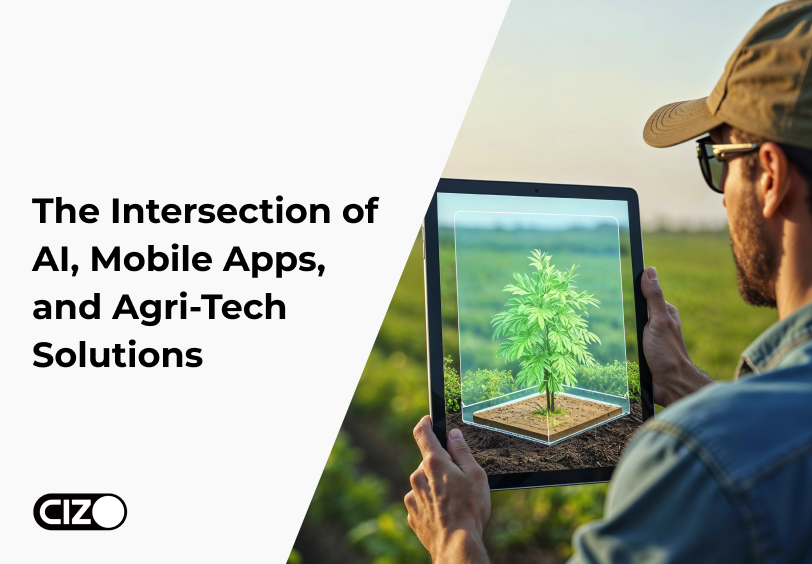 28th April 2025
28th April 2025
Smart Restaurants: How Technology is Changing the Way We Eat
The way we dine is undergoing a massive transformation. Gone are the days of shouting orders across a noisy kitchen or waiting impatiently for a buzzer to flash. Today, restaurants are embracing IoT (Internet of Things), AI (Artificial Intelligence), and automation to create seamless, efficient, and futuristic dining experiences.
From robotic chefs to AI-powered menus, technology is reshaping every aspect of the food service industry.
In this blog, we’ll explore how smart restaurants are revolutionizing the way we eat—making service faster, food safer, and experiences more personalized than ever before.
We only collect information for business use as detailed in our Privacy Policy
1. IoT in Restaurants: The Rise of Connected Dining
Smart Order Tracking & Notifications
Remember the frustration of hovering near the counter, wondering if your food is ready? IoT is solving this with smart buzzers and location-based alerts. Some restaurants now provide wearable devices or mobile notifications that tell customers exactly when their order is ready—no more guessing or missed calls.
For example, a restaurant might hand you a tabletop IoT device that not only buzzes but can even guide you back to your seat if you’ve wandered off. This reduces congestion at pickup counters and improves efficiency.
Inventory & Supply Chain Management
IoT sensors help restaurants track inventory in real-time. Smart fridges and storage units can:
- Monitor food freshness and send alerts before items expire.
- Automatically reorder supplies when stock runs low.
- Track temperature fluctuations to ensure food safety.
This minimizes waste, cuts costs, and ensures consistent quality.
Smart Kitchen Appliances
Connected kitchen equipment, like IoT-enabled ovens and fryers, can:
- Adjust cooking times automatically based on food type.
- Send maintenance alerts before breakdowns occur.
- Sync with order systems to prioritize meals efficiently.
This reduces human error and keeps the kitchen running smoothly.
2. AI-Powered Dining: Personalization & Efficiency
AI Chatbots & Voice Ordering
Many restaurants now use AI-driven chatbots (like those on WhatsApp or Facebook Messenger) to take orders. Some even integrate with voice assistants (Alexa, Google Assistant) so customers can order via smart speakers.
Benefits:
- Faster order processing
- Reduced miscommunication
- 24/7 customer service (for online orders)
Dynamic Menu Optimization
AI analyzes customer preferences, weather, and sales trends to adjust menus in real-time. For example:
- A restaurant might highlight warm soups on a cold day.
- A fast-food chain could push high-margin items based on demand.
- AI can even suggest personalized meal recommendations based on past orders.
Automated Food Preparation
Robotic chefs and AI-driven cooking systems are no longer sci-fi. Companies like Spyce (now part of Sweetgreen) use robotic kitchens to prepare meals with precision. Benefits include:
- Consistent taste and portion control
- Faster service
- Reduced labor costs
3. Automation: The Backbone of Smart Restaurants
Self-Service Kiosks & Contactless Payments
Fast-food giants like McDonald’s and Panera have adopted self-ordering kiosks, reducing wait times and human errors. Contactless payments (Apple Pay, QR codes) speed up transactions, making dining more convenient.
Robotic Waiters & Delivery Bots
Some restaurants, like Robot Pizza in San Francisco, use robots to assemble and cook food. Others deploy autonomous serving robots (like those from Pudu Robotics) to deliver dishes to tables. Even food delivery is getting automated with self-driving delivery bots from companies like Starship Technologies.
Predictive Analytics for Demand Forecasting
AI-powered tools analyze historical sales, weather, and local events to predict customer traffic. This helps restaurants:
Optimize staff schedules
- Reduce food waste
- Manage peak hours efficiently
4. The Future of Smart Restaurants
The next wave of dining tech includes:
- Augmented Reality (AR) Menus – View 3D food models before ordering.
- Blockchain for Food Transparency – Track a dish’s ingredients from farm to table.
- Biometric Payments – Pay with facial recognition or fingerprint scans.
How CIZO Can Help Develop IoT & AI Solutions for Restaurants
At CIZO, we specialize in IoT app development services, mobile app development services, and AI app development to help restaurants transform their operations. Here’s how we can assist:
Custom IoT App Development Services
We build smart restaurant solutions such as:
- IoT-based order tracking systems (smart buzzers, real-time notifications)
- Inventory management apps with automated alerts
- Connected kitchen devices for seamless operations
AI App Development for Smarter Dining
Our AI-powered solutions include:
- Chatbots & voice assistants for effortless ordering
- Predictive analytics tools for demand forecasting
- Personalized menu recommendation engines
Mobile App Development Services
We create user-friendly mobile apps that integrate with restaurant systems, offering features like:
- Contactless ordering & payments
- Loyalty programs & personalized offers
- Real-time order status updates
Why Choose CIZO?
- Expertise in IoT, AI, and automation
- Custom solutions tailored to your business needs
- Seamless integration with existing systems
Whether you’re a fast-food chain or a fine-dining restaurant, CIZO’s IoT and AI app development services can help you stay ahead in the competitive food industry
Conclusion: A Smarter, Faster, More Enjoyable Dining Experience
Technology isn’t just changing restaurants—it’s enhancing every step of the dining journey. From IoT-enabled kitchens to AI-driven personalization, smart restaurants are making service faster, more efficient, and more enjoyable for customers and businesses alike.
As these innovations evolve, we’ll see even more creative applications—perhaps AI that remembers your favorite order or robotic pop-up kitchens that serve food anywhere. One thing is certain: The future of dining is smart, seamless, and exciting.
A PROJECT WITH CIZO?











 hello@cizotech.com
hello@cizotech.com +91 79907 01039
+91 79907 01039 


